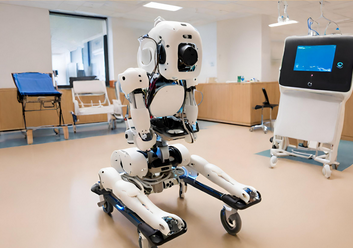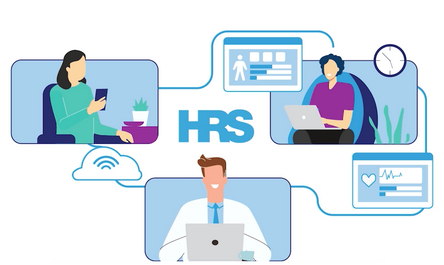
Lung capacity plays a crucial role in overall health and athletic performance. Whether you’re an athlete seeking to boost endurance or someone looking to improve general fitness, understanding how to increase lung capacity is essential. By expanding your lungs’ ability to take in and utilize oxygen, you can enhance physical performance, reduce fatigue, and improve overall respiratory function. This article will explore effective strategies for increasing lung capacity, with tips on breathing exercises, lifestyle changes, and exercises that promote better lung function.
Lung capacity affects how efficiently the body utilizes oxygen during physical activity. The larger the lung capacity, the more oxygen is available to fuel the muscles during exercise, helping to improve endurance and reduce the onset of fatigue. In this article, we will discuss various ways to enhance lung capacity, from techniques that improve breath control to exercises that strengthen respiratory muscles. With the right approach, you can boost your lung health, increase stamina, and breathe easier.
1. Breathing Techniques to Increase Lung Capacity
The way you breathe significantly impacts your lung function. By practicing certain breathing techniques, you can improve both lung capacity and efficiency. The key is to train your lungs to take in more air and utilize oxygen more effectively. Here are a few techniques that can help increase lung capacity:
1.1 Diaphragmatic Breathing (Belly Breathing)
Diaphragmatic breathing, or belly breathing, is one of the most effective techniques for increasing lung capacity. Unlike shallow chest breathing, diaphragmatic breathing engages the diaphragm, which allows for deeper breaths and better oxygen intake. This technique helps fully expand the lungs and encourages the flow of air deep into the lower lungs, where there is more room for gas exchange.
To practice diaphragmatic breathing:
- Sit or lie down in a comfortable position.
- Place one hand on your chest and the other on your abdomen.
- Inhale deeply through your nose, expanding your belly rather than your chest. You should feel your abdomen rise as the diaphragm moves down and your lungs fill with air.
- Exhale slowly through your mouth, letting the air flow out fully.
- Practice this breathing technique for 5–10 minutes daily.
This technique increases lung volume by training the body to breathe more efficiently, promoting better oxygenation of the blood and improving endurance.
1.2 Pursed Lip Breathing
Pursed lip breathing is another useful technique to help increase lung capacity. This method involves breathing in through the nose and exhaling slowly through pursed lips, as though you are blowing through a straw. The controlled exhalation helps keep the airways open longer, allowing for more effective air exchange in the lungs.
To practice pursed lip breathing:
- Inhale slowly through your nose for about 2 seconds.
- Purse your lips as if you’re about to whistle or blow out a candle.
- Exhale slowly and steadily through pursed lips for about 4 seconds.
- Practice this technique for several minutes, particularly when exercising or during times of breathlessness.
Pursed lip breathing can help control breathing during physical exertion, enhance oxygen exchange, and promote relaxation, all of which can contribute to better lung health.
2. Physical Exercises to Strengthen Respiratory Muscles
Increasing lung capacity isn’t just about improving breath control; it’s also about strengthening the muscles involved in respiration. Regular physical exercise can help improve the efficiency of your lungs and respiratory muscles, resulting in better endurance and lung function.
2.1 Aerobic Exercise
Aerobic exercises like running, swimming, cycling, and brisk walking are excellent ways to improve lung capacity. These activities require sustained effort and will challenge the cardiovascular and respiratory systems to work more efficiently. Over time, aerobic exercise increases the size of the heart and lungs, improves the efficiency of oxygen transport, and strengthens the respiratory muscles.
As you engage in regular aerobic exercise, your lungs will adapt to handle increased oxygen demands, improving both your capacity to breathe and your overall endurance.
2.2 Interval Training
High-intensity interval training (HIIT) is another effective exercise for increasing lung capacity. Interval training alternates between short bursts of intense activity and periods of lower intensity. This exercise style pushes your respiratory system to its limits, helping to increase lung volume and improve overall endurance.
When performing HIIT, the body is forced to work harder to oxygenate the muscles, which in turn strengthens the lungs and enhances their capacity. Over time, this will make it easier to breathe during strenuous activities and increase stamina.
2.3 Breathing Exercises for Endurance
Incorporating specific breathing exercises into your workout routine can also help improve lung capacity. For example, you can practice controlled breathing while exercising, such as breathing in for a certain count and exhaling for a longer count. This practice helps regulate airflow, ensuring that your lungs take in as much air as possible during physical activity.
Breathing exercises during exercise allow you to maintain a steady oxygen supply to the muscles, helping to delay the onset of fatigue and improve performance.
3. Lifestyle Tips for Optimal Lung Health
In addition to breathing exercises and physical activity, lifestyle choices can play a significant role in improving lung capacity. The following tips can help support better lung function and overall respiratory health:
3.1 Avoid Smoking and Pollutants
Smoking and exposure to environmental pollutants can reduce lung capacity over time. Smoking damages the lungs and decreases their ability to expand fully, while pollutants like dust, chemicals, and allergens can irritate the airways, leading to inflammation and decreased lung efficiency. Avoiding smoking and minimizing exposure to harmful pollutants are crucial steps in maintaining healthy lungs.
If you smoke, quitting is one of the most effective actions you can take to improve your lung capacity and prevent further damage. Consider seeking support from healthcare professionals, support groups, or smoking cessation programs to help you quit successfully.
3.2 Maintain a Healthy Weight
Carrying excess weight can put additional strain on your lungs, making it more difficult to take deep breaths and reducing overall lung capacity. Maintaining a healthy weight through balanced nutrition and regular exercise can alleviate this pressure, helping to improve lung function. Weight loss can also improve circulation, which allows oxygen to be more efficiently delivered to your tissues.
3.3 Stay Hydrated
Adequate hydration is essential for optimal lung function. Staying hydrated ensures that the mucus membranes in the lungs remain moist, which helps clear out debris and maintain a healthy respiratory system. Drinking enough water throughout the day supports the proper functioning of all organs, including the lungs.
Conclusion
In conclusion, how to increase lung capacity involves a combination of breathing techniques, physical exercise, and healthy lifestyle choices. By incorporating diaphragmatic and pursed lip breathing, engaging in aerobic exercise and interval training, and following lifestyle habits such as avoiding smoking and maintaining a healthy weight, you can improve both your lung capacity and endurance. Fostering better lung health doesn’t happen overnight, but with consistent practice and care, you can experience significant benefits in your respiratory function and overall physical performance. Making these strategies a part of your routine will not only help you breathe better but also enhance your overall well-being and stamina.





